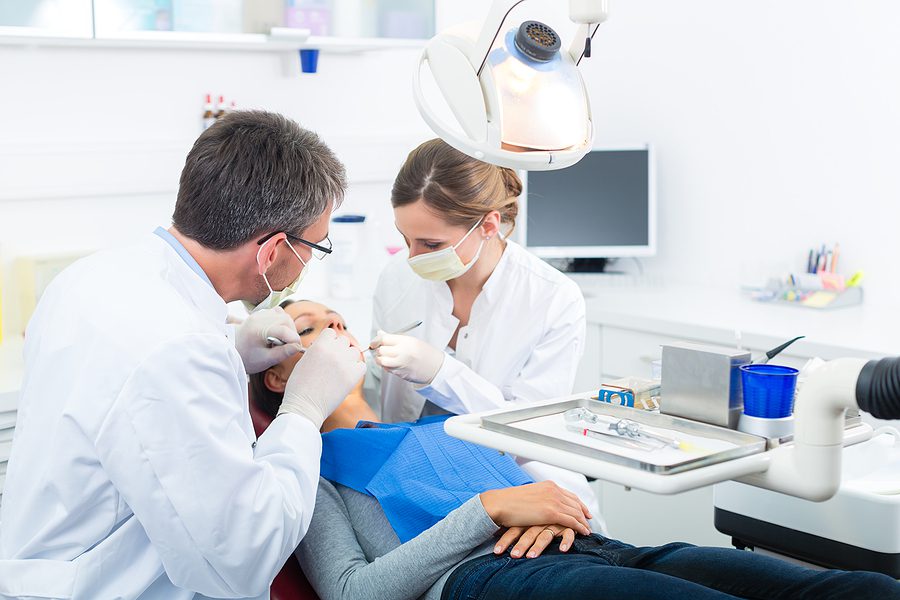Why Hands-On Training Matters in Dental Assisting Education
Choosing the right dental assisting program is a big decision. One key consideration for many aspiring dental assistants is how well a program prepares them for working in a dental office. While classroom instruction is a fundamental part of learning, hands-on training in a clinical setting is where students gain the confidence and competence to succeed in this dynamic field. Without practical experience, students may be underprepared for the day-to-day challenges of assisting dentists, managing patients, and operating dental equipment.
South Florida Dental Assisting School understands the value of real-world training and incorporates it into every aspect of its program. Hands-on experience transforms theoretical knowledge into practical skills, giving students an edge as they transition into their careers.
Building Practical Skills for Real-World Success
Dental assisting is a hands-on profession that requires precision, coordination, and adaptability. The skills needed to assist a dentist during a procedure or handle sterilization processes cannot be fully grasped through textbooks or lectures alone. Hands-on training allows students to work directly with dental tools and equipment in a clinical setting, which deepens their understanding and prepares them for what they will encounter on the job.
For example, students learn to take dental impressions, prepare materials for fillings, and assist during procedures like root canals or cleanings. These are intricate tasks that require practice to perform correctly and efficiently. Without hands-on training, students risk feeling unprepared when they face these responsibilities in a professional setting.
Developing Confidence Through Live Practice
Gaining confidence is a vital part of becoming a successful dental assistant. Hands-on training helps students overcome initial nervousness by allowing them to practice in a supportive, real-life environment. Working with actual patients under the supervision of experienced professionals builds self-assurance and reinforces proper techniques.
Mistakes are inevitable when learning new skills, but practical training offers a safe space to make and learn from those errors. This trial-and-error process helps students refine their abilities and approach their first job with far less anxiety.
By the time students enter the workforce, they have already performed many of the tasks they’ll encounter daily, making them better equipped to handle challenges with confidence and poise.
Mastering Patient Care and Communication
Dental assistants play an essential role in patient care. Beyond technical skills, they must know how to interact with patients to make them feel comfortable and cared for during dental visits. Hands-on training allows students to develop these interpersonal skills in a real-world setting.
Whether it’s calming a nervous patient, explaining procedures, or addressing questions, dental assistants are often the bridge between the dentist and the patient. Learning to manage these interactions in a clinical environment helps students practice empathy, active listening, and clear communication. These experiences prepare them to provide exceptional care and contribute to positive patient outcomes.
The Value of Teamwork in Dental Assisting
In a dental office, teamwork is everything. Dental assistants must collaborate closely with dentists, hygienists, and administrative staff to ensure seamless patient care. Hands-on training introduces students to the dynamics of a clinical team, teaching them how to work effectively alongside others.
Students practice coordinating with dentists during procedures, communicating with hygienists about patient needs, and assisting in maintaining a clean and organized workspace. This exposure helps them understand the importance of timing, communication, and mutual support in a busy dental office.
Advantages of Hands-On Training
The benefits of hands-on training in dental assisting education extend far beyond skill acquisition. It sets students up for success by providing experiences they can carry into their careers. Key advantages include:
- Real-World Problem Solving: Practical training equips students to address unexpected challenges during dental procedures. By working in a clinical setting, they develop quick-thinking skills and learn to efficiently adapt solutions to meet patient needs and procedural requirements.
- Exposure to Diverse Scenarios: Working with live patients introduces students to various dental conditions and treatment plans. This variety provides invaluable experience, helping them build the confidence to handle unique situations and effectively collaborate with dental teams in different patient care contexts.
- Resume Boost: Hands-on experience makes candidates more appealing to potential employers, demonstrating they have already practiced the skills required for the job. Employers appreciate candidates who can transition smoothly into their roles without extensive on-the-job training.
- Familiarity with Dental Tools: Hands-on training ensures students become adept at using dental instruments and equipment they will encounter in their careers. This familiarity enhances efficiency, accuracy, and confidence when working in professional dental environments, enabling them to contribute effectively from day one.
- Immediate Application of Knowledge: Integrating classroom lessons with clinical practice allows students to apply what they’ve learned in a real-world setting immediately. This reinforces their understanding of key concepts, enhances skill retention, and bridges the gap between theoretical knowledge and practical expertise.
Preparing for the Workforce
Dental assistants are an integral part of any dental office, and their responsibilities go far beyond handing instruments to the dentist. They contribute to patient comfort, support procedural efficiency, and uphold high hygiene and safety standards. Hands-on training prepares students for all aspects of the job, from technical skills to soft skills like teamwork and communication.
South Florida Dental Assisting School recognizes that employers are looking for candidates who can step into their roles with confidence and competence. By incorporating hands-on training into their program, the school provides students with the practical experience needed to stand out in a competitive job market.
Take the First Step Toward Your Career
At South Florida Dental Assisting School, we believe real-world training is the foundation of a successful career in dental assisting. Combining classroom instruction with extensive hands-on practice, our program equips students with the skills, confidence, and experience they need to thrive in a clinical setting. If you’re ready to pursue a rewarding career in dental assisting, Contact us today to learn more or speak with Admissions. Our team is here to help you every step of the way!
